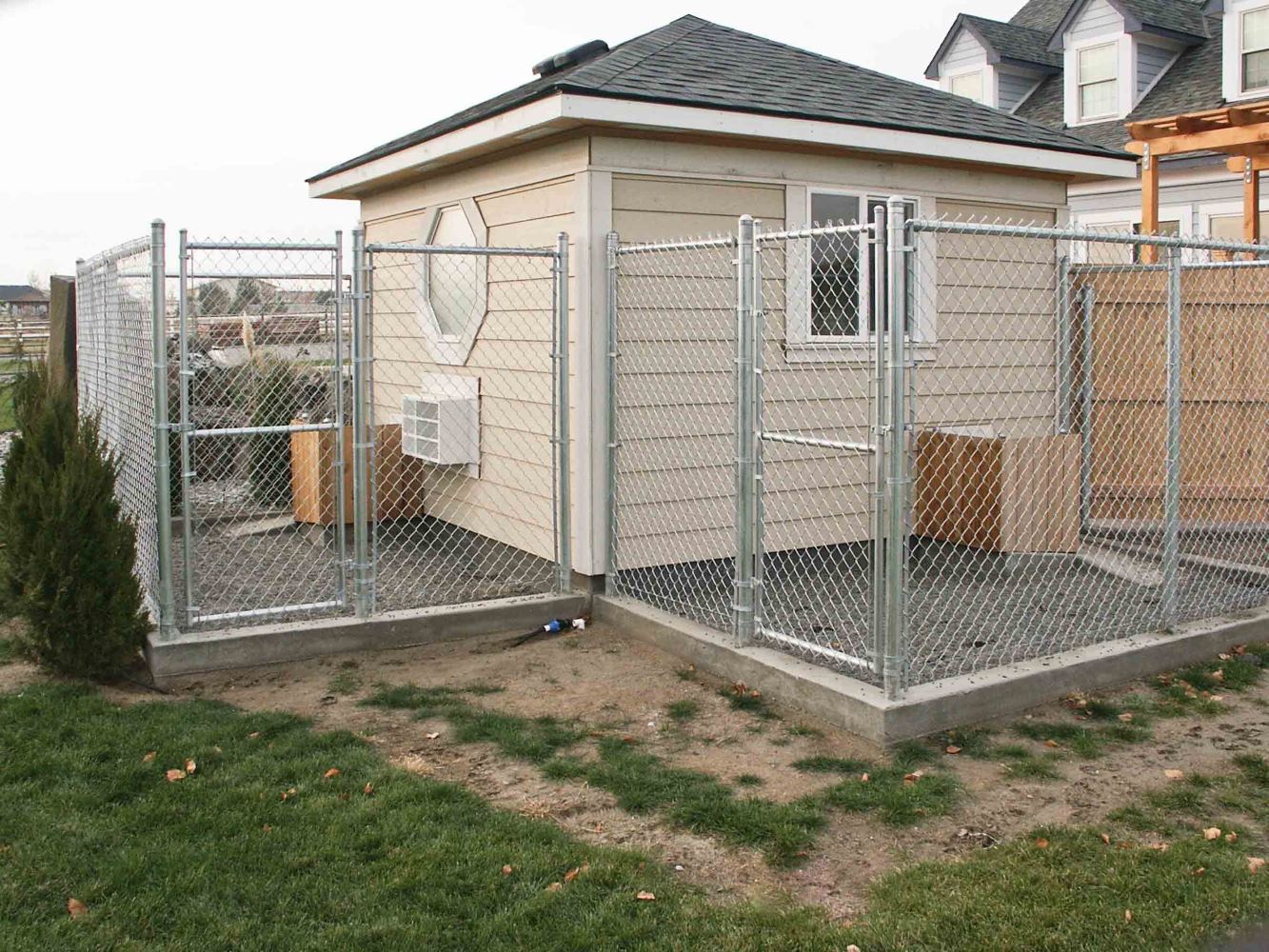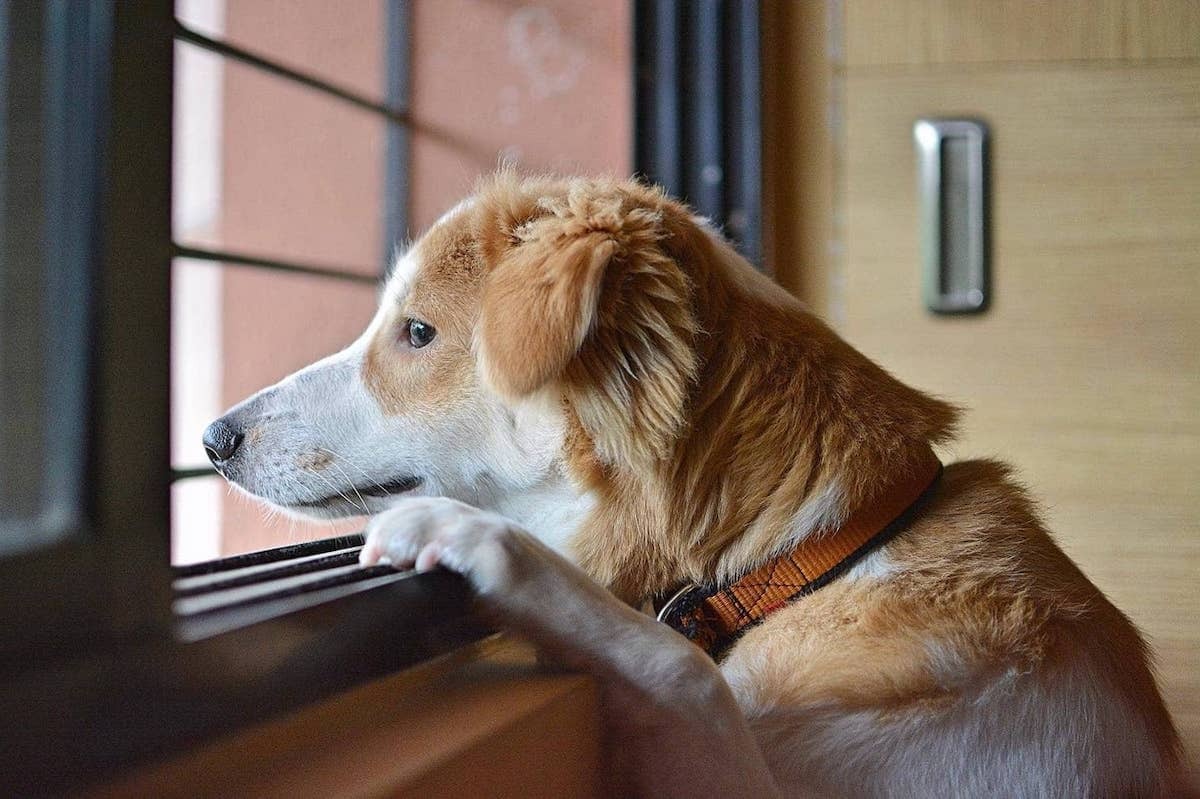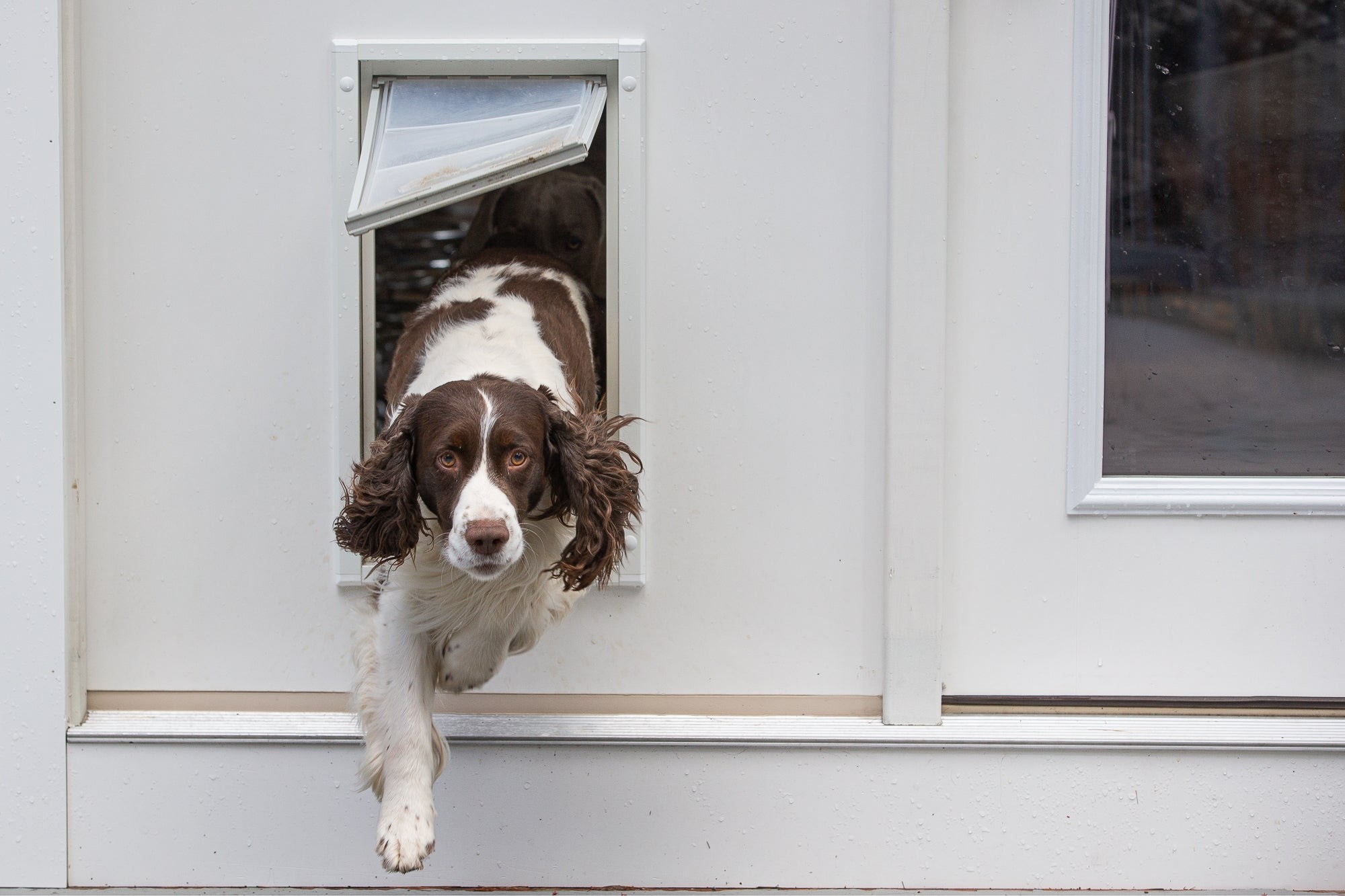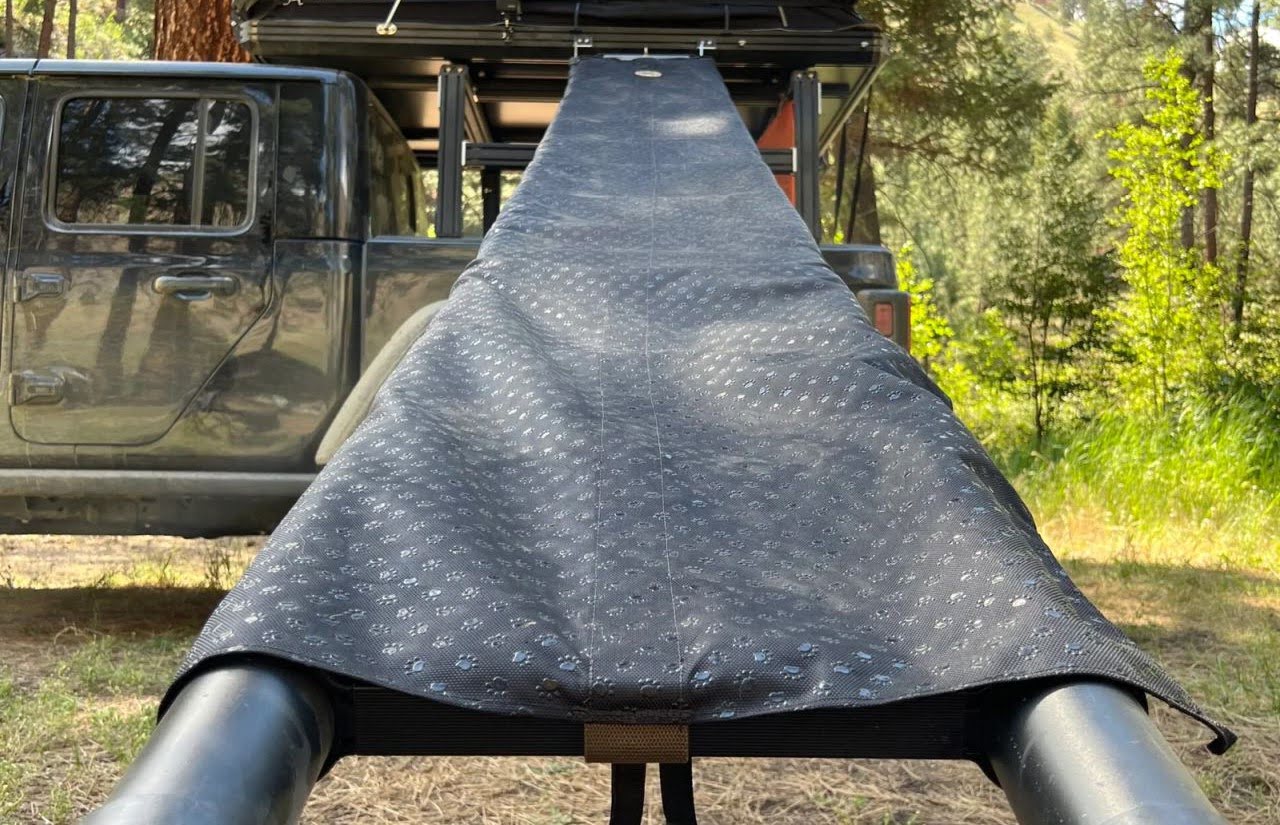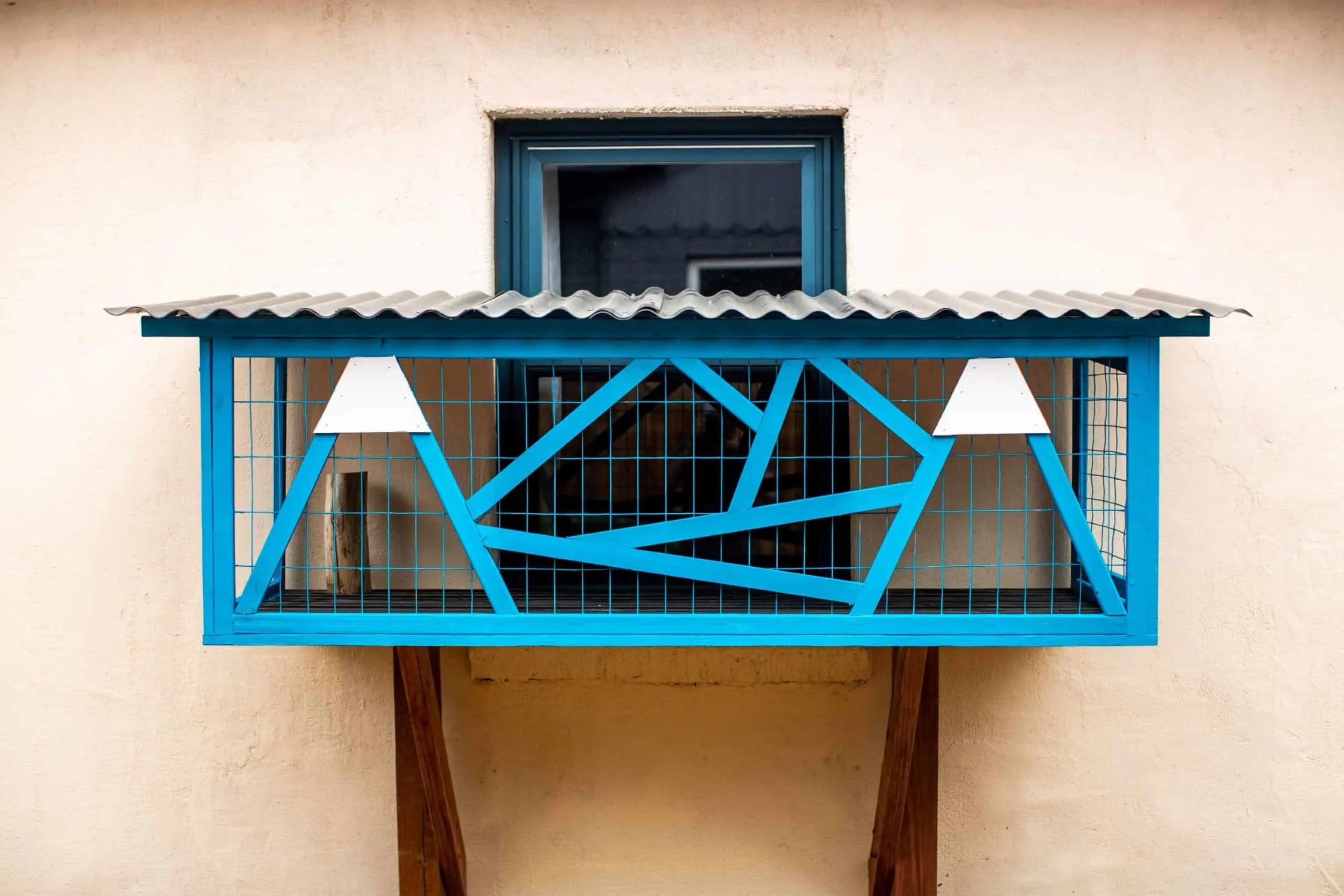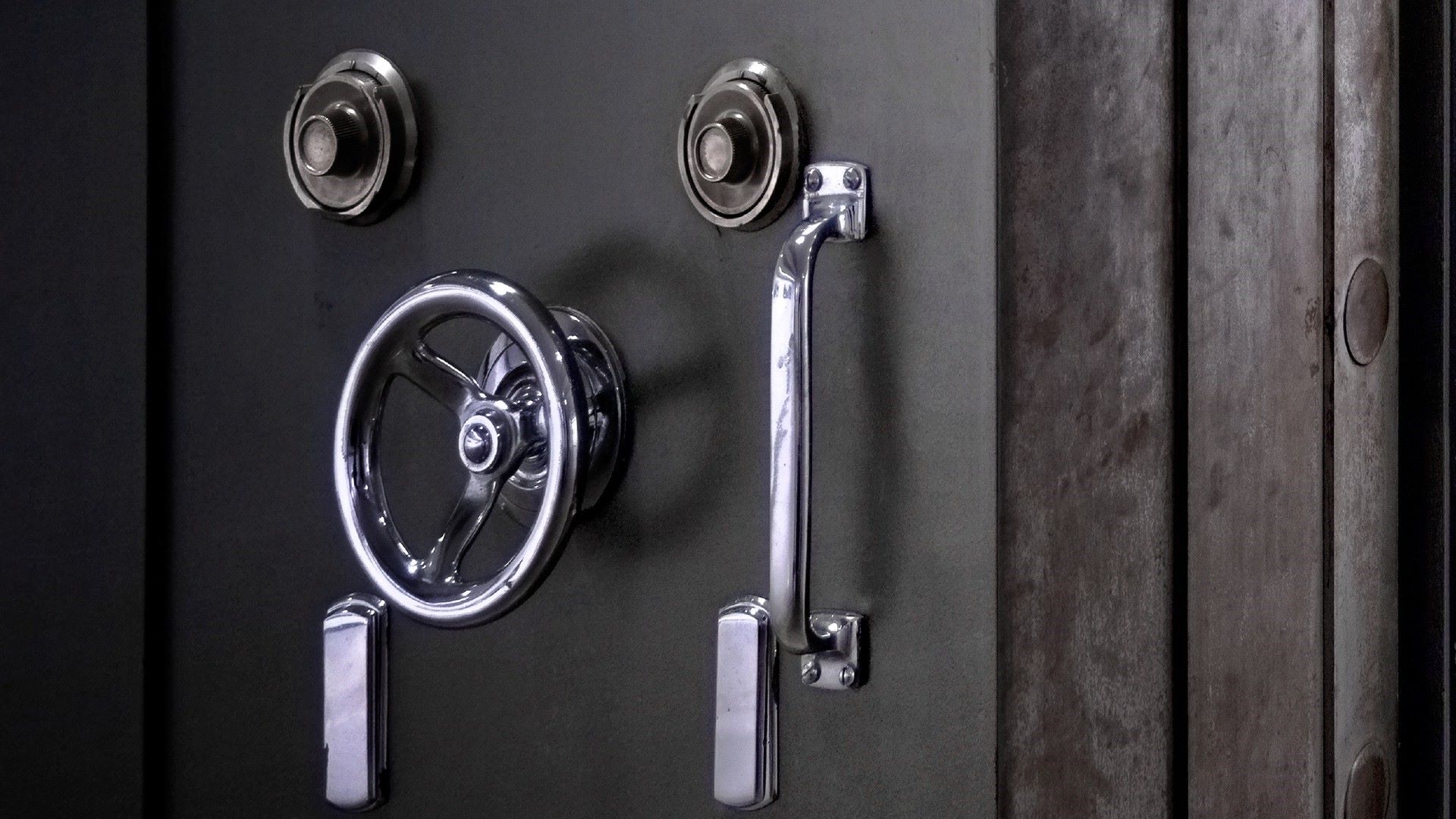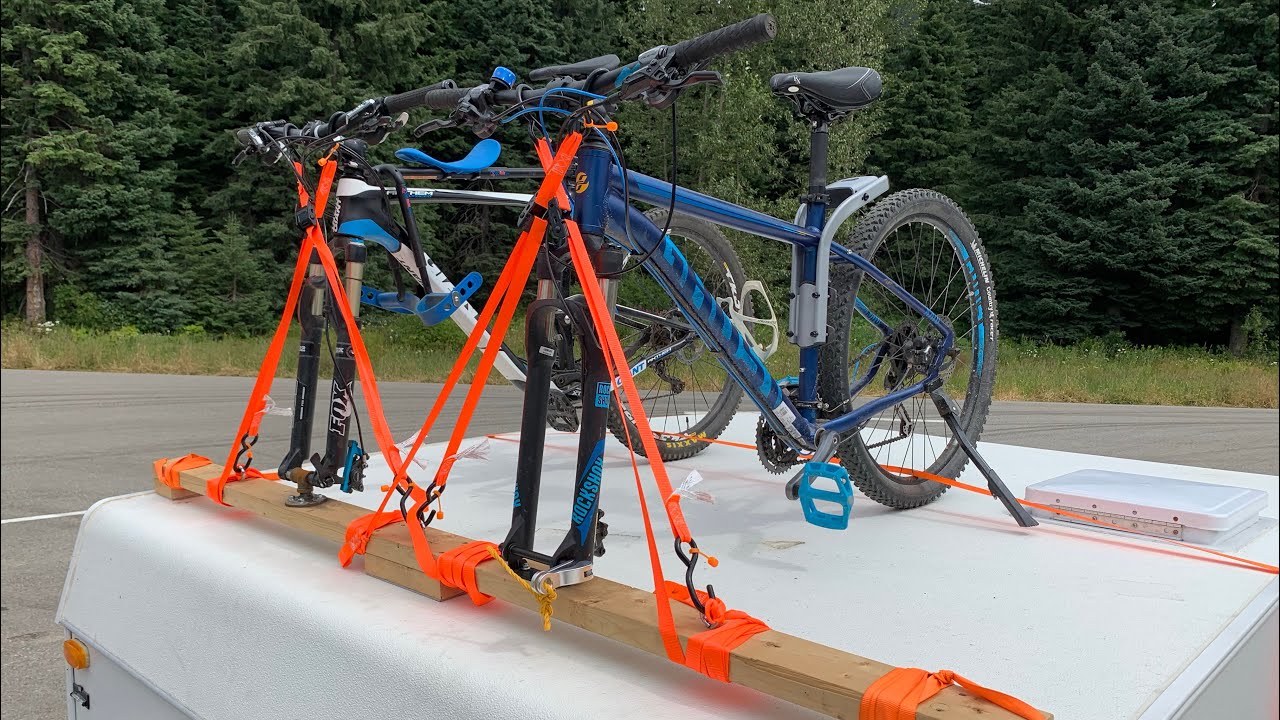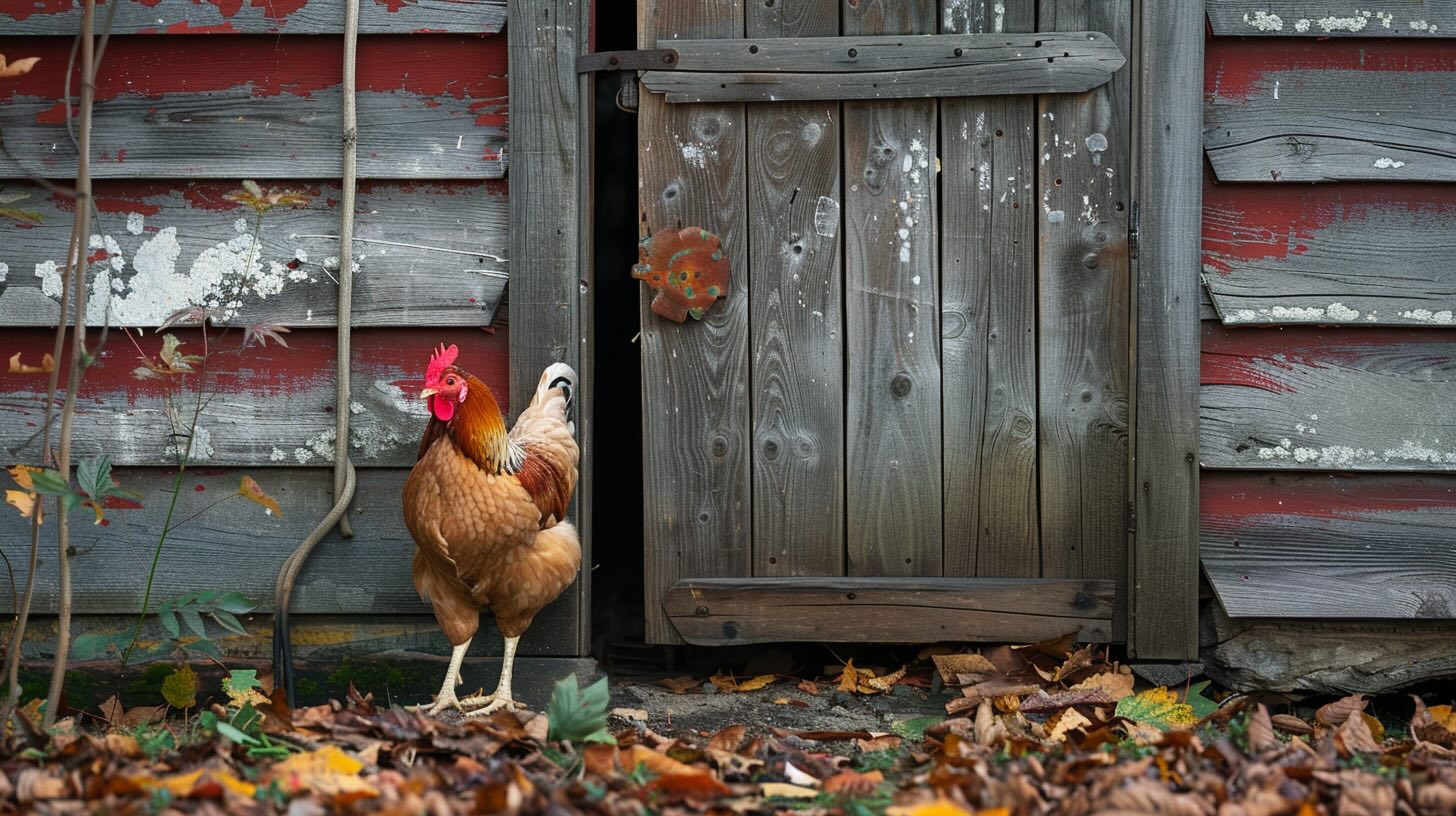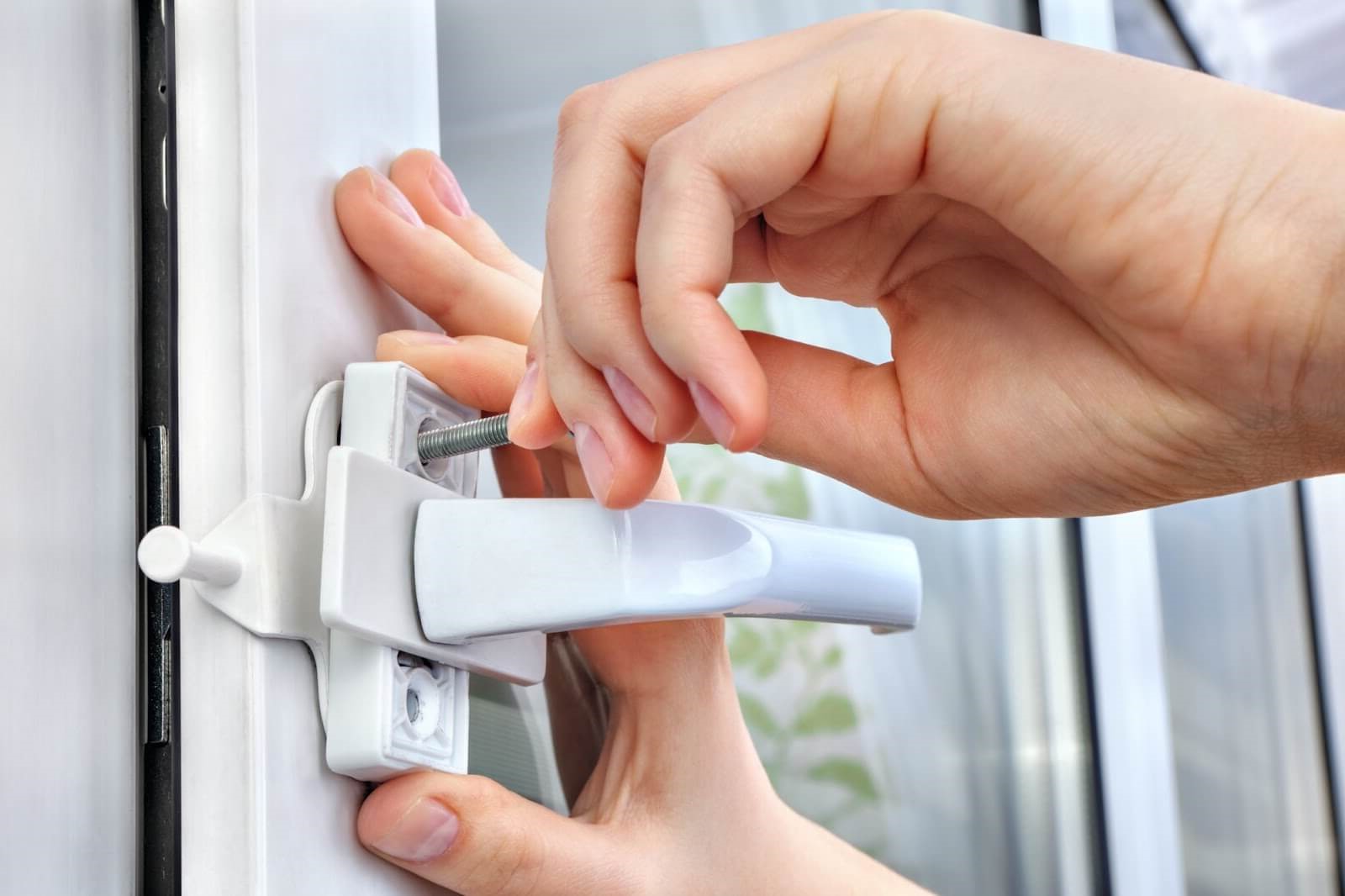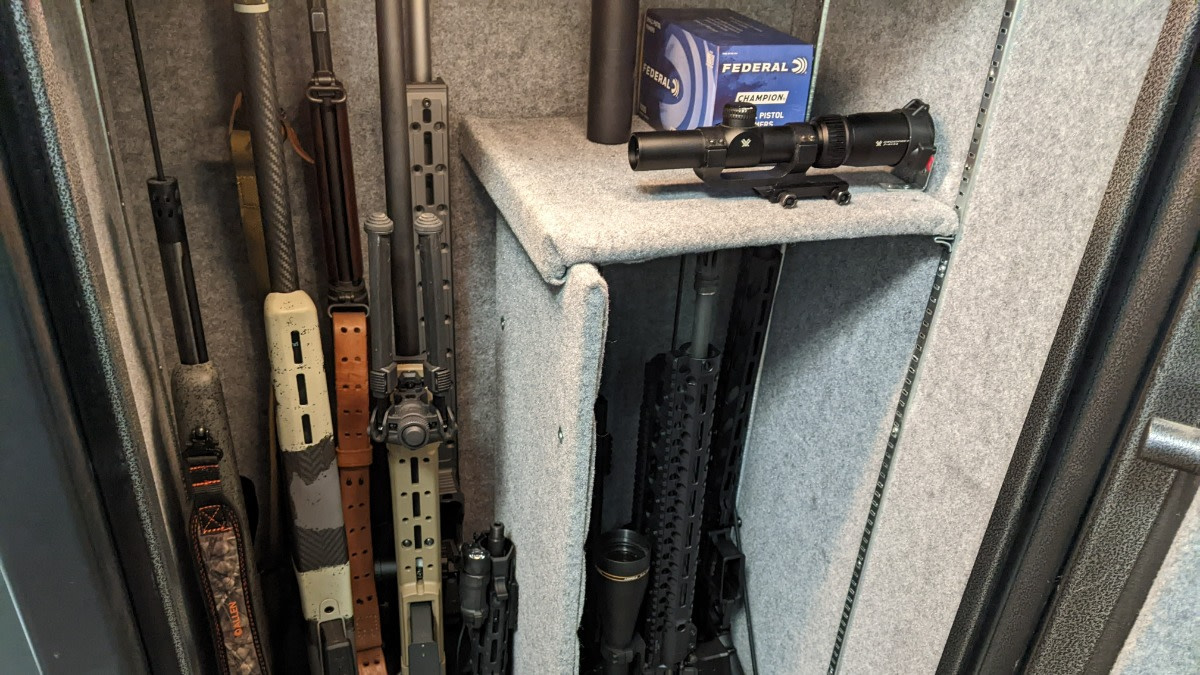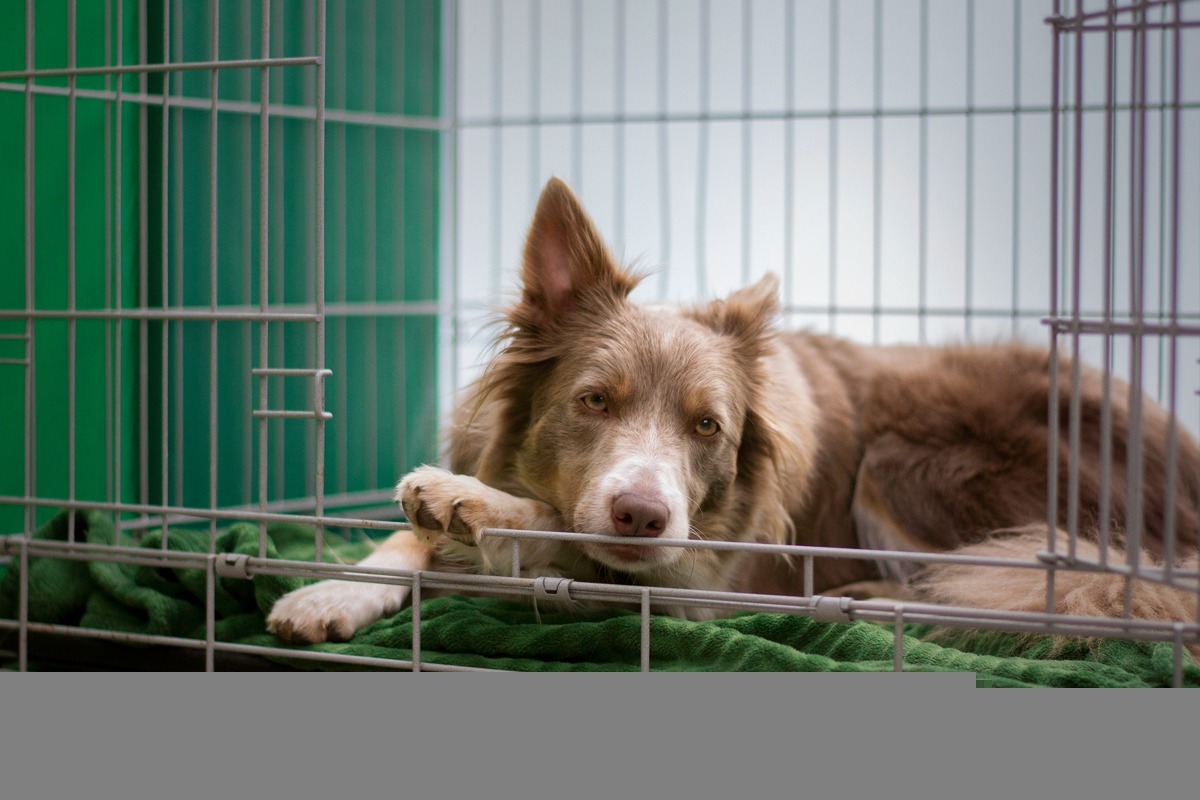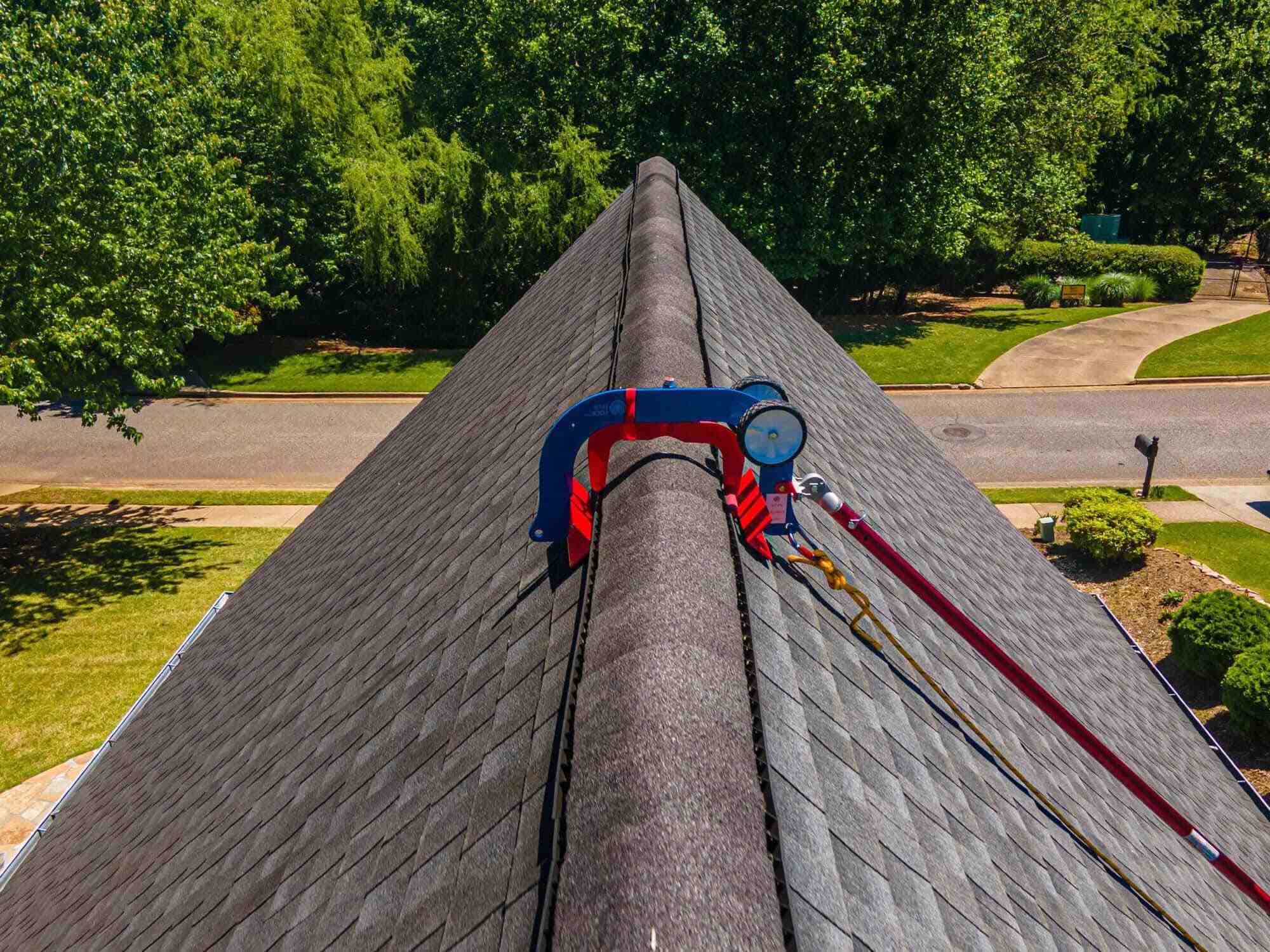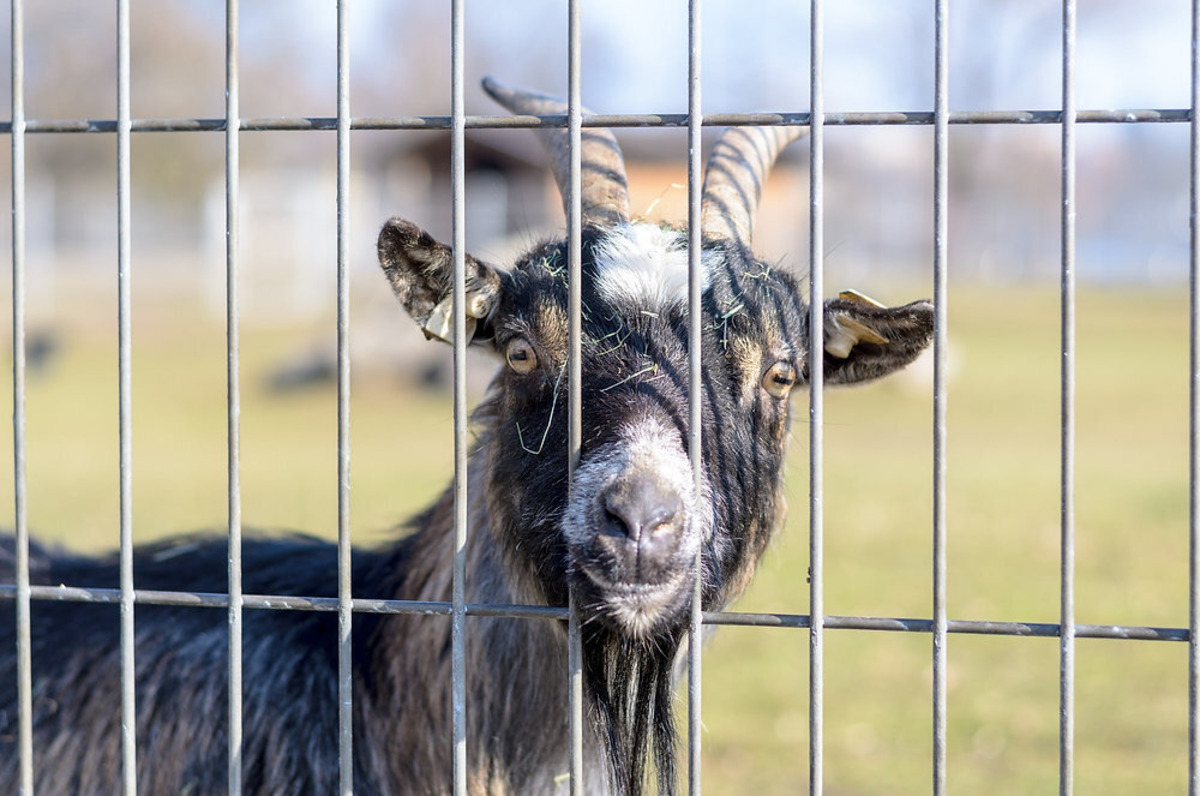Home>Create & Decorate>DIY & Crafts>DIY Dog Fence: How To Create A Safe And Secure Enclosure For Your Furry Friend
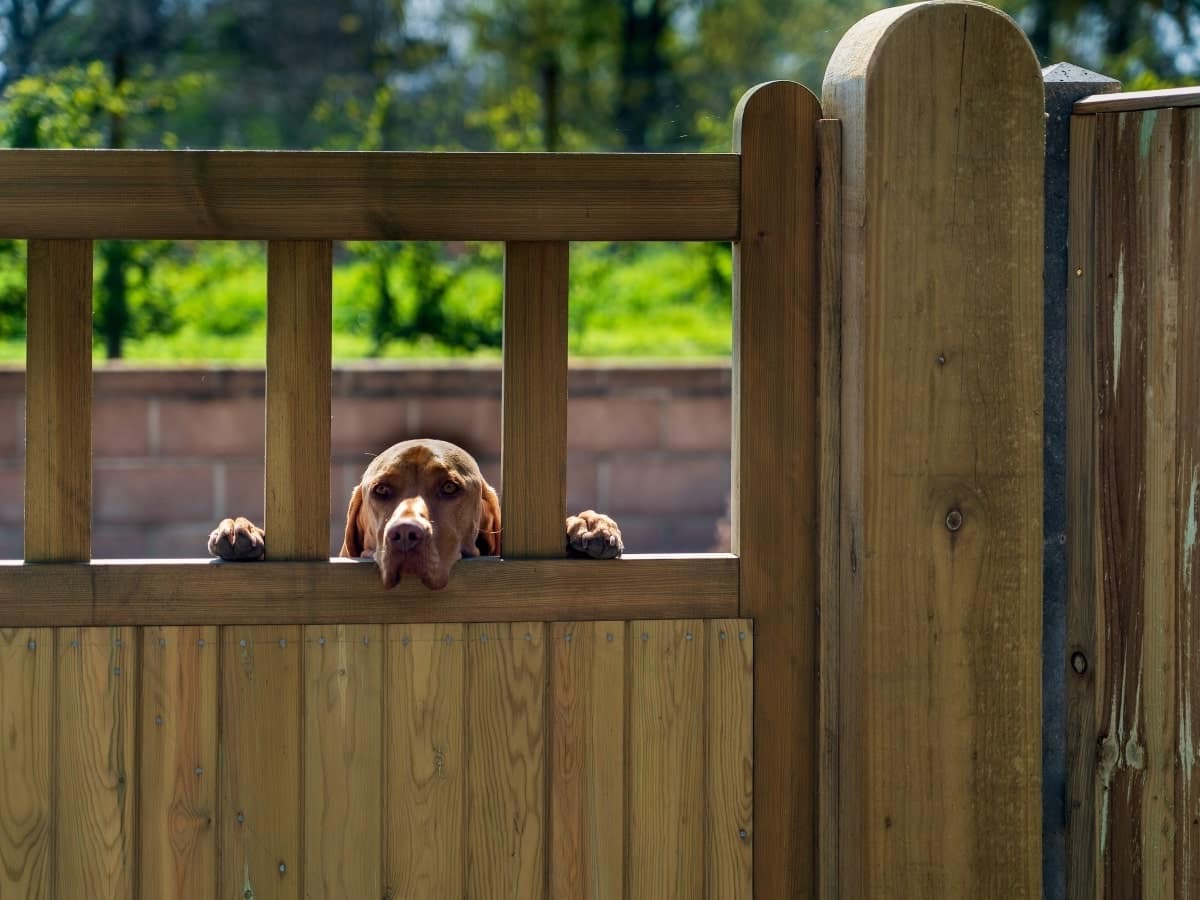

DIY & Crafts
DIY Dog Fence: How To Create A Safe And Secure Enclosure For Your Furry Friend
Published: May 31, 2024

Senior Editor in Create & Decorate, Kathryn combines traditional craftsmanship with contemporary trends. Her background in textile design and commitment to sustainable crafts inspire both content and community.
Learn how to build a DIY dog fence to keep your furry friend safe and secure. Discover creative and practical DIY & Crafts ideas for creating a perfect enclosure.
(Many of the links in this article redirect to a specific reviewed product. Your purchase of these products through affiliate links helps to generate commission for Twigandthistle.com, at no extra cost. Learn more)
Introduction
Are you a proud pet parent looking to give your furry friend the freedom to roam and play in a safe and secure environment? Creating a DIY dog fence can be a rewarding project that not only provides your canine companion with a designated space but also offers peace of mind for you as a pet owner. In this article, we will explore the step-by-step process of planning, designing, building, and maintaining a DIY dog fence to ensure the safety and security of your beloved pet. Let's dive into the world of DIY dog fences and discover how to create a safe and secure enclosure for your furry friend.
Read more: How to DIY Dog-Proof Lever Door Handles
Understanding the Benefits of a DIY Dog Fence
Creating a DIY dog fence offers a multitude of benefits for both you and your furry friend. Let's take a closer look at why investing time and effort into building a dog fence can be advantageous:
-
Customization: One of the primary benefits of a DIY dog fence is the ability to customize it according to your specific needs and the layout of your outdoor space. You can tailor the size, shape, and height of the enclosure to suit your dog's breed, size, and activity level.
-
Cost-Effectiveness: Building your own dog fence can be a cost-effective alternative to purchasing pre-made fencing systems. By sourcing materials and constructing the fence yourself, you can potentially save money while still ensuring the safety of your pet.
-
Quality Control: When you take on the task of building a DIY dog fence, you have full control over the quality of materials and construction. This means you can select durable, pet-friendly materials and ensure that the fence is built to withstand the elements and the activities of your dog.
-
Bonding and Satisfaction: Engaging in a DIY project like building a dog fence can be a fulfilling experience. It allows you to bond with your pet as you create a safe space for them to enjoy. The satisfaction of completing a project that enhances your pet's well-being is truly rewarding.
-
Tailored Safety Measures: Every dog has unique needs when it comes to safety and containment. With a DIY dog fence, you can implement specific safety measures such as digging barriers, escape-proofing, and visual boundaries tailored to your dog's behavior and tendencies.
-
Enhanced Outdoor Experience: A well-designed dog fence can provide your pet with the freedom to enjoy the outdoors while keeping them safe from potential hazards. It allows them to exercise, play, and explore within the confines of a secure enclosure.
By understanding these benefits, you can see how a DIY dog fence can be a valuable addition to your home, offering safety, customization, and a sense of accomplishment in providing a secure space for your furry friend.
Planning and Designing Your DIY Dog Fence
When embarking on the journey of creating a DIY dog fence, meticulous planning and thoughtful design are crucial steps in ensuring the success and effectiveness of the enclosure. Here's a detailed breakdown of the planning and designing process:
-
Assess Your Outdoor Space: Begin by surveying your outdoor area where the dog fence will be installed. Take note of any potential obstacles, natural boundaries, and the overall size and shape of the space. Understanding the layout of your yard will help you determine the most suitable design for the fence.
-
Define the Enclosure Size: Consider the size of your dog and their activity level when determining the dimensions of the enclosure. A larger, more active dog may require a spacious area to roam and play, while smaller breeds may thrive in a more compact space. Take into account the need for exercise, comfort, and safety when defining the size of the enclosure.
-
Select the Fence Type: There are various types of dog fences to choose from, including traditional wooden fences, chain-link fences, invisible electric fences, and portable fencing options. Each type has its own set of advantages and considerations. Evaluate the pros and cons of each type based on your dog's behavior, your aesthetic preferences, and the overall functionality of the fence.
-
Consider Visibility and Aesthetics: If you opt for a traditional or decorative fence, consider the visibility and aesthetics of the enclosure. Ensure that the design allows you to keep an eye on your dog while maintaining a visually appealing addition to your outdoor space. Balancing functionality with visual appeal is key to a well-designed dog fence.
-
Incorporate Safety Features: Safety should be a top priority when designing a dog fence. Incorporate features such as secure gates, smooth edges, and sturdy construction to prevent any potential hazards for your pet. Additionally, consider factors such as weather resistance, durability, and escape-proofing to enhance the safety of the enclosure.
-
Plan for Landscaping and Integration: If you have existing landscaping or plan to incorporate it around the dog fence, factor this into your design. Consider how the fence will integrate with your outdoor aesthetics and any future landscaping plans. This may involve selecting fence materials and colors that complement the surrounding environment.
-
Check Local Regulations: Before finalizing your design, be sure to check local regulations and zoning laws regarding the installation of dog fences. Some areas may have specific requirements or restrictions, such as maximum fence height or setback distances from property lines. Adhering to these regulations will help prevent any potential issues in the future.
By carefully planning and designing your DIY dog fence, you can create a tailored enclosure that meets the specific needs of your pet while seamlessly integrating with your outdoor space. This thoughtful approach sets the foundation for a successful and effective dog fence installation.
Choosing the Right Materials for Your DIY Dog Fence
Selecting the appropriate materials for your DIY dog fence is a critical step in ensuring the durability, safety, and functionality of the enclosure. Here's a comprehensive guide to choosing the right materials for your project:
-
Wood:
- Pressure-Treated Wood: Known for its durability and resistance to rot and decay, pressure-treated wood is a popular choice for traditional dog fences. It provides a classic, natural look and can be stained or painted to match your outdoor aesthetic.
- Cedar: If you prioritize aesthetics and natural resistance to insects and decay, cedar is an excellent option. It offers a charming appearance and is known for its longevity, making it a suitable choice for dog fences.
-
Chain Link:
- Galvanized Steel: Chain-link fences constructed with galvanized steel are sturdy, low-maintenance, and provide excellent visibility. They are ideal for containing dogs while allowing them to see beyond the enclosure.
-
Vinyl:
- PVC Vinyl: Vinyl fences are known for their low maintenance and resistance to rot, fading, and discoloration. They offer a clean, modern look and are available in various colors and styles to complement your outdoor space.
-
Wire Mesh:
- Welded Wire: Welded wire mesh is a versatile option for dog fences, offering strength and visibility. It can be used to create secure enclosures while allowing for airflow and unobstructed views.
-
Composite Materials:
- Composite Fencing: Made from a blend of wood fibers and recycled plastic, composite fencing offers the natural appearance of wood with the low maintenance and durability of plastic. It is resistant to rot, decay, and insect damage, making it a long-lasting choice for dog enclosures.
-
Electric Fencing:
- Insulated Wire: For invisible electric dog fences, insulated wire is a crucial component. It is buried underground to create a boundary, providing a safe and effective containment system for dogs.
When selecting materials, consider factors such as durability, maintenance requirements, visibility, and the specific needs of your dog. Additionally, ensure that the materials are pet-friendly, free from sharp edges or potential hazards, and capable of withstanding outdoor elements. By choosing the right materials, you can create a sturdy and secure DIY dog fence that meets the unique requirements of your furry friend.
Building and Installing Your DIY Dog Fence
Once you have meticulously planned, designed, and selected the materials for your DIY dog fence, it's time to roll up your sleeves and embark on the exciting phase of building and installing the enclosure. Follow these step-by-step guidelines to ensure a successful construction and installation process:
-
Gather Necessary Tools and Equipment: Before diving into the construction, gather all the essential tools and equipment required for the project. This may include a post hole digger, shovel, level, measuring tape, saw, drill, hammer, and safety gear such as gloves and eye protection.
-
Mark the Fence Layout: Begin by marking the layout of the fence using stakes and string. This will provide a visual guide for the installation and ensure that the fence is aligned according to your design plan.
-
Prepare the Ground: If you are installing a traditional fence, start by digging post holes along the marked layout. The depth and diameter of the holes will depend on the type of fence and the local soil and weather conditions. Ensure that the posts are securely anchored in the ground to provide stability for the fence.
-
Assemble the Fence Panels: If you are using pre-made fence panels, assemble them according to the manufacturer's instructions. Ensure that the panels are securely connected and aligned before installation.
-
Install the Fence Posts: Place the fence posts in the prepared holes and fill the surrounding area with concrete to secure them in place. Use a level to ensure that the posts are upright and evenly spaced.
-
Attach the Fence Panels: Once the posts are set, attach the fence panels to the posts using appropriate fasteners. Ensure that the panels are level and properly aligned to create a seamless enclosure.
-
Install Gates and Entry Points: If your dog fence includes gates or entry points, install them securely and ensure that they open and close smoothly. Gates should be equipped with latches or locks to prevent unauthorized access.
-
Test the Stability and Security: After the installation is complete, test the stability and security of the fence by applying gentle pressure and ensuring that there are no loose components. This step is crucial to verify the integrity of the enclosure.
-
Install Additional Safety Features: Depending on your design and materials, consider adding additional safety features such as caps for exposed posts, protective barriers for sharp edges, and visual markers to enhance the visibility of the fence.
-
Invisible Electric Fence Installation: If you are opting for an invisible electric dog fence, follow the specific installation instructions provided by the manufacturer. This typically involves burying the insulated wire along the designated boundary and setting up the transmitter and receiver units.
By following these guidelines, you can effectively build and install your DIY dog fence, creating a secure and functional enclosure for your furry friend. Remember to prioritize safety, precision, and attention to detail throughout the construction process to ensure the long-term effectiveness of the fence.
Read more: How to Build a DIY Dog Fence for Your Window
Maintaining and Upkeeping Your DIY Dog Fence
Maintaining and upkeeping your DIY dog fence is essential to ensure its longevity, functionality, and the safety of your furry friend. By implementing regular maintenance practices, you can address potential issues, preserve the integrity of the enclosure, and provide a secure environment for your pet. Here's a comprehensive guide to maintaining and upkeeping your DIY dog fence:
-
Inspect for Wear and Damage: Conduct routine inspections of the entire fence structure, including posts, panels, gates, and any additional features. Look for signs of wear, damage, or loose components that may compromise the security of the enclosure.
-
Address Repairs Promptly: If you identify any issues during the inspection, such as loose fasteners, damaged panels, or leaning posts, address them promptly. Tighten fasteners, replace damaged components, and realign any misaligned sections to maintain the structural integrity of the fence.
-
Trim Vegetation and Overgrowth: Keep the area surrounding the dog fence clear of vegetation and overgrowth. Trim back bushes, shrubs, and vines that may encroach on the fence, as they can create opportunities for your pet to climb or escape.
-
Check Gates and Latches: Regularly inspect the gates and latches to ensure they are functioning correctly. Lubricate hinges and moving parts as needed, and replace any worn or damaged hardware to prevent potential security breaches.
-
Monitor Ground Conditions: Pay attention to the ground conditions around the fence, especially after heavy rainfall or extreme weather. Address any erosion, soil shifts, or standing water near the fence line to maintain stability and prevent potential damage.
-
Reinforce Digging Barriers: If your dog is prone to digging, reinforce the base of the fence with dig guards or barriers to prevent escape attempts. Secure the bottom of the fence with additional materials or extend it below ground level to deter digging.
-
Inspect Invisible Electric Fences: If you have an invisible electric dog fence, regularly inspect the boundary wire for any breaks, damage, or interference. Test the functionality of the transmitter and receiver units to ensure they are operating correctly.
-
Clean and Maintain Visible Fences: For traditional visible fences, clean and maintain the surface materials according to the manufacturer's recommendations. This may involve periodic washing, staining, sealing, or painting to preserve the appearance and durability of the fence.
-
Secure Perimeter Markers: If your dog fence includes visual markers or flags to define the boundary, ensure they are securely in place and clearly visible. Replace any faded or damaged markers to maintain the visibility of the enclosure.
-
Monitor Pet Behavior and Enclosure Usage: Observe your pet's behavior within the enclosure and monitor their interaction with the fence. Address any signs of attempted escape, excessive chewing, or damage caused by your pet to prevent potential breaches.
By implementing these maintenance practices, you can uphold the functionality and safety of your DIY dog fence, providing a secure and reliable enclosure for your beloved pet. Regular upkeep ensures that the fence remains an effective containment solution while offering peace of mind for both you and your furry friend.
Conclusion: Enjoying a Safe and Secure Enclosure for Your Furry Friend
In conclusion, creating a DIY dog fence is a fulfilling endeavor that not only provides a safe and secure environment for your furry friend but also offers a sense of accomplishment and peace of mind for you as a pet owner. By understanding the benefits of a DIY dog fence, meticulously planning and designing the enclosure, choosing the right materials, and executing the construction and maintenance processes, you can ensure that your pet enjoys a designated space tailored to their needs. The customization, cost-effectiveness, and quality control offered by a DIY dog fence make it a valuable addition to any home, fostering a sense of freedom and security for your canine companion. With a well-designed and maintained dog fence, you can witness your furry friend thriving in a safe and secure outdoor environment, allowing them to exercise, play, and explore while remaining protected from potential hazards. Embrace the journey of creating a DIY dog fence, and revel in the joy of providing your pet with a space where they can truly feel at home.

